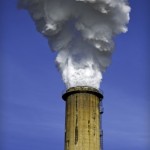Most people think becoming energy efficient simply means reducing energy use. They think replacing one technology with another less energy consuming version is the only way to become truly energy efficient. Innovators in the energy efficiency arena are taking a different path. They look at the energy we’re already using and look for ways to use it more effectively. They are “repurposing” energy. The innovators look for energy that is being wasted and find ways to harvest it and put it to use in ways that were never before considered.
“Can that free waste heat be used to heat….?”
Here’s an example. We recently wrote about the innovative approach to growing produce in an urban setting through the use of greenhouses on the tops of buildings. That process creates cost effective produce because of the absence of shipping expenses. The occupants of the building purchase food at their in-house “farmer’s market”.
One of our readers had this to say about the concept:
“These roof top greenhouses, how are they heated? How is the building below the roof heated? Is there a chimney poking out of the roof? Can that free waste heat be used to heat these greenhouses? And the CO2? And the water recovered from the cooled exhaust, can it be used to irrigate these plants? Could this help battle the effects of Climate Change, and help grow food?” Sid A.
I contacted Sid with hopes of learning more about his ideas. Sid has a fascinating technology that is known as a Condensing Flue Gas Heat Recovery system. Sid explained that 15%-25% of the natural gas that is combusted in the boiler room is vented into the atmosphere. This is all HOT wasted energy. That waste energy can be recovered with his system and used in a wide variety of ways that most people would never consider.
A huge win using a waste product to heat space in order to grow food while improving air quality and conserving water!
In the greenhouse example, the combusted heat energy that was being wasted could be recovered with an Sidel Recovery Unit (SRU) flue gas condenser and then used as the heat source for the greenhouse. This would allow year round crop growth with zero added expense.
Sid also noted that in the combustion of natural gas there is a large volume of moisture that goes up the chimney. This distilled water created during the heat recovery process will be collected, nutrients added, and can then be used to irrigate the plants while conserving water!
In a surprise revelation Sid noted that even the CO2 that exits a chimney can be reclaimed and turned into a vital ingredient for the plants! Plants absorb CO2 in their growth process and release life giving oxygen in return.
The Mine Project
Since our conversation, Sid is looking to partner with the Energy Alliance Group on a large mine project. The mine has huge boilers that have a proportionately sized gas bill. The project involves recovering the wasted energy presently “going up in smoke” and using that energy to increase the efficiency of these boilers, reducing their utility bills.
This Condensing Flue Gas Heat Recovery technology can be used wherever there are larger volumes of natural gas being combusted. Sid mentioned hospitals and hotels, universities and commercial buildings, district heating plants and prisons, commercial laundries or food and beverage processors. This energy can be used to heat domestic water, industrial process water, or provide building heat. The condensate water can even be used for lawn irrigation, and all this at zero operating expense. Sid’s oldest unit is over 30 years old, and saving energy every day.
Becoming energy efficient does not necessarily just mean using less energy. It can also mean harvesting energy that was formerly wasted and using it in creative ways. Sid closed our conversation by saying this:
“We clearly see the waste of energy when we leave a light on in an empty room. We understand waste when we see a trash truck headed towards the dump. The problem is we don’t see the wasted energy rising out of a chimney. It’s invisible! Until we understand the potential available in that wasted energy, it will continue to be an unnecessary cost and loss to our society.”
The Energy Alliance Group (EAG) of North America is an energy solutions company providing energy saving products, technologies and services.

Leave a Reply